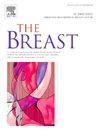Real-world risk of recurrence and treatment outcomes with adjuvant endocrine therapy in patients with stage II-III HR+/HER2- early breast cancer
IF 5.7
2区 医学
Q1 OBSTETRICS & GYNECOLOGY
引用次数: 0
Abstract
Background
Despite adjuvant endocrine therapy (ET), recurrence is still a concern for patients with HR+/HER2- early breast cancer (EBC). We assessed recurrence risk in real-world patients with stage II/III HR+/HER2- EBC treated with adjuvant ET.
Methods
A retrospective analysis was conducted using the ConcertAI Patient360 database (January 1995 to April 2021) of patients with stage II/III HR+/HER2- EBC ≥18 years who underwent surgery and received adjuvant ET. Risk of recurrence was assessed using invasive disease-free survival (iDFS) with adapted STEEP criteria. An ET subanalysis evaluated iDFS, distant disease-free survival, and overall survival in patients receiving adjuvant non-steroidal aromatase inhibitors (NSAI) vs tamoxifen.
Results
In the full analysis cohort (N = 3133), the risk of an iDFS event was 26.1 % at 5 years, rising to 45.0 % at 10 years. Among patients with stage II disease, the risk of an iDFS event at 5 and 10 years was 22.7 % and 40.5 %, respectively; stage III 5- and 10-year risk was 40.4 % and 62.9 %. Patients with node-negative disease had 5- and 10-year risks of 22.1 % and 36.9 %, respectively; node-positive 5- and 10-year risk was 28.9 % and 49.4 %. ET subanalysis showed improved iDFS with NSAI ± ovarian function suppression vs tamoxifen ± ovarian function suppression (HR, 0.83; 95 % CI, 0.69–0.98; p = 0.031); this trend was observed regardless of menopausal status.
Conclusions
This real-world study highlights the considerable risk of recurrence with adjuvant ET in patients with stage II or III HR+/HER2- EBC (including node-negative disease) and confirms the need for improved treatment options.
II-III期HR+/HER2-早期乳腺癌患者辅助内分泌治疗的真实世界复发风险和治疗结果
尽管进行了辅助内分泌治疗(ET),但对于HR+/HER2-早期乳腺癌(EBC)患者来说,复发仍然是一个问题。方法使用ConcertAI Patient360数据库(1995年1月至2021年4月)对II/III期HR+/HER2- EBC≥18年且接受手术和辅助ET治疗的患者进行回顾性分析。复发风险评估采用浸润性无病生存期(iDFS)和适应的STEEP标准。ET亚分析评估了接受辅助治疗的非甾体芳香酶抑制剂(NSAI)和他莫昔芬的患者的iDFS、远端无病生存期和总生存期。结果在全分析队列中(N = 3133), iDFS事件的风险在5年时为26.1%,在10年时上升至45.0%。在II期疾病患者中,5年和10年发生iDFS事件的风险分别为22.7%和40.5%;III期5年和10年风险分别为40.4%和62.9%。淋巴结阴性患者的5年和10年风险分别为22.1%和36.9%;淋巴结阳性的5年和10年风险分别为28.9%和49.4%。ET亚分析显示,与他莫昔芬±卵巢功能抑制相比,NSAI±卵巢功能抑制可改善iDFS (HR, 0.83;95% ci, 0.69-0.98;p = 0.031);这一趋势与绝经状态无关。这项现实世界的研究强调了II期或III期HR+/HER2- EBC(包括淋巴结阴性疾病)患者辅助ET复发的相当大的风险,并证实了改进治疗方案的必要性。
本文章由计算机程序翻译,如有差异,请以英文原文为准。
求助全文
约1分钟内获得全文
求助全文
来源期刊

Breast
医学-妇产科学
CiteScore
8.70
自引率
2.60%
发文量
165
审稿时长
59 days
期刊介绍:
The Breast is an international, multidisciplinary journal for researchers and clinicians, which focuses on translational and clinical research for the advancement of breast cancer prevention, diagnosis and treatment of all stages.
 求助内容:
求助内容: 应助结果提醒方式:
应助结果提醒方式:


